
Laser projection systems
By illuminating the sodium vapor layer at the top of the atmosphere, laser projection systems are used to create artificial guide stars for adaptive optics systems for astronomy. The laser launch telescope must maintain spectral quality while expanding and collimating the sodium vapor frequency beam. A wavefront sensor examines the artificial star to measure atmospheric turbulence, and enable control of a deformable mirror to correct the telescope's vision.
VLT laser launch telescope
TNO delivered 5 laser launch telescopes with a thermally insensitive design, which have been in operation at the VLT since 2016. The laser launch telescope is the optical tube assembly (OTA) portion of the Laser Projection System (LPS). For VLT, ESO itself designed and built the LPS Beam Conditioning and Diagnostic System (BCDS), which handles the laser signal between the Toptical source and the launch telescope.
The key characteristics of the VLT-OTA:
- Athermal design to minimize defocus due to thermal effects
- Input source beam diameter: 15 mm (source provided by ESO, key components supplied by Toptica and MPBC)
- Beam expander ratio: 20x (300 mm diameter collimated output beam)
- Transmitted wavefront error: 17-23 nm rms (required < 50 nm rms)
- Thermally induced defocus: 0.15 waves PV (required <0.2 waves rms)
- Pointing accuracy on-sky: < 0.2” at 3x rms (required 0.3” at 3x rms)
- Polarization extinction ratio: > 99.5 % (required > 98 %)
- Throughput: 97.7 % (required > 95 %)
- Field selector mechanism: 4.8 arcmin radius FOV (design can accomodate larger FOV)
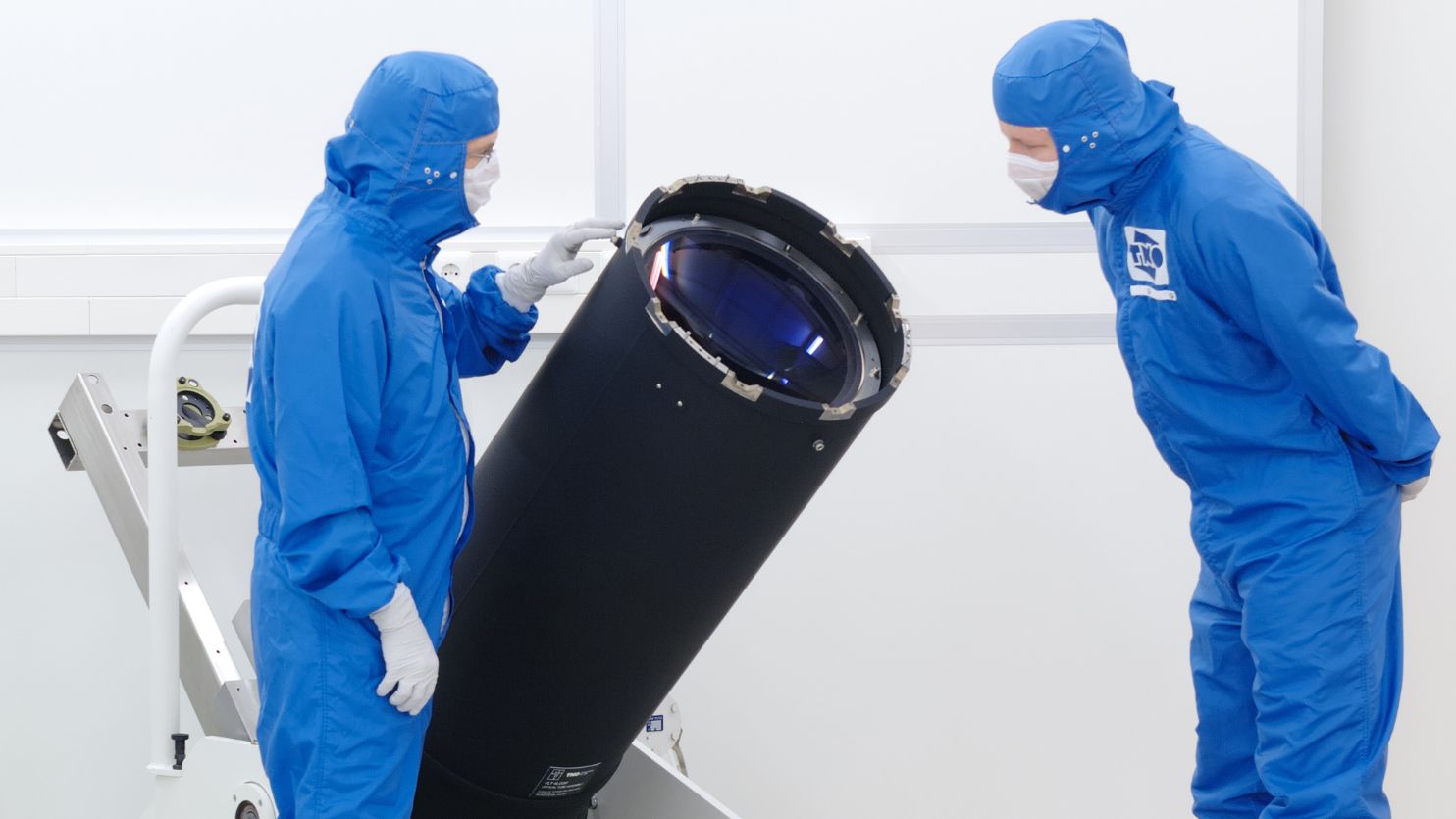
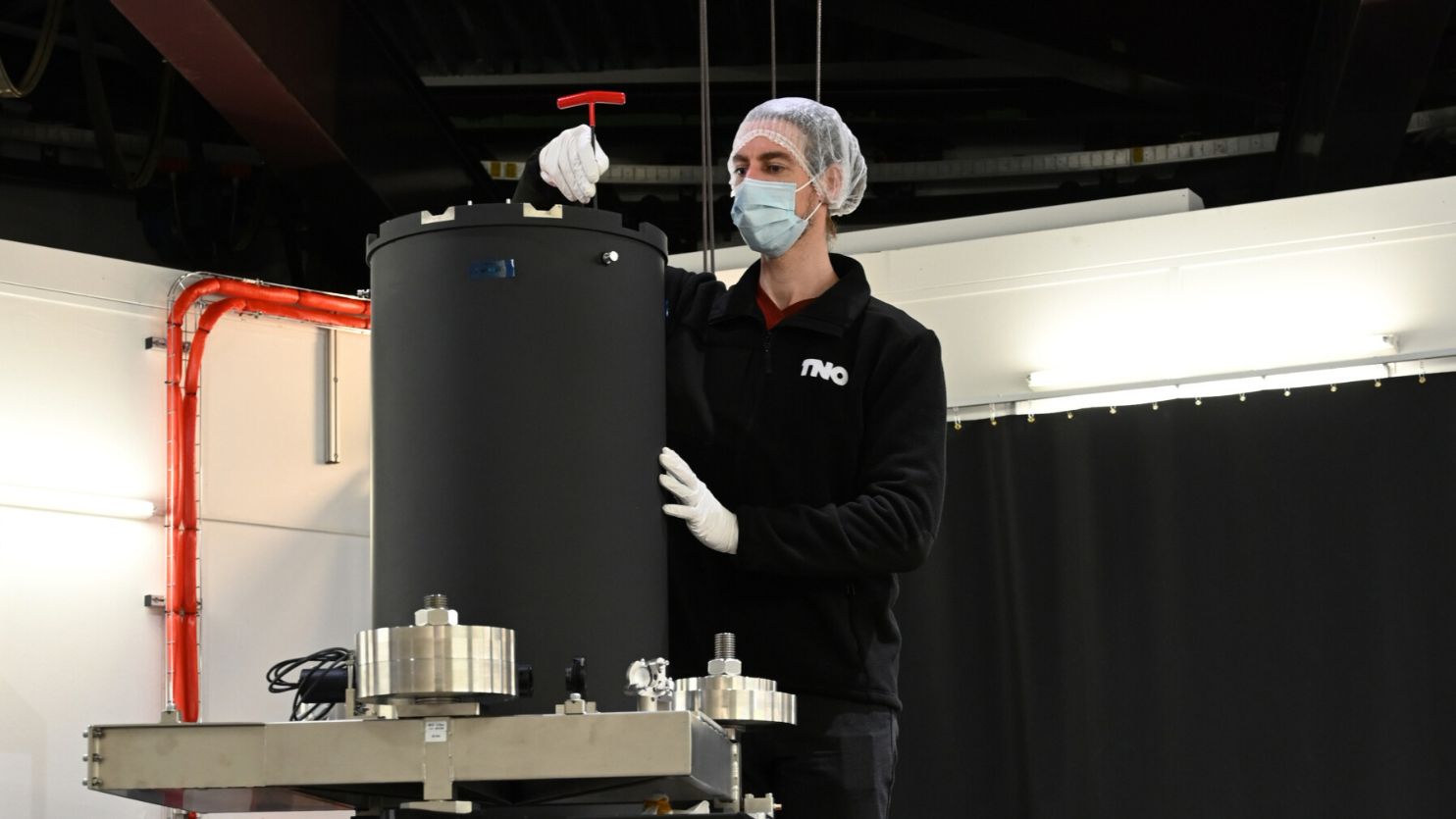
ELT laser projection systems
Based on the excellently performing VLT heritage, TNO bid on building up to 11 more LPS systems for the ESO ELT and VLT-Gravity+. This time joining with industry partner Demcon, to industrialize a new design for the BCDS.
The ELT-LPS main characteristics:
- Suitable for laser power of 50W
- FoV expanded to 7 arcmin (half cone angle)
- WFE < 65 nm rms
- Defocus across FoV < 120 nm PV
- On sky pointing resolution of 0.2 arcsec
- Absolute line of sight pointing error < 10 arcsec
- Relative pointing error < 0.25 arcsec (120 s interval)
- Height: 2.4 m, length: 1.7 m, width: 1.4 m
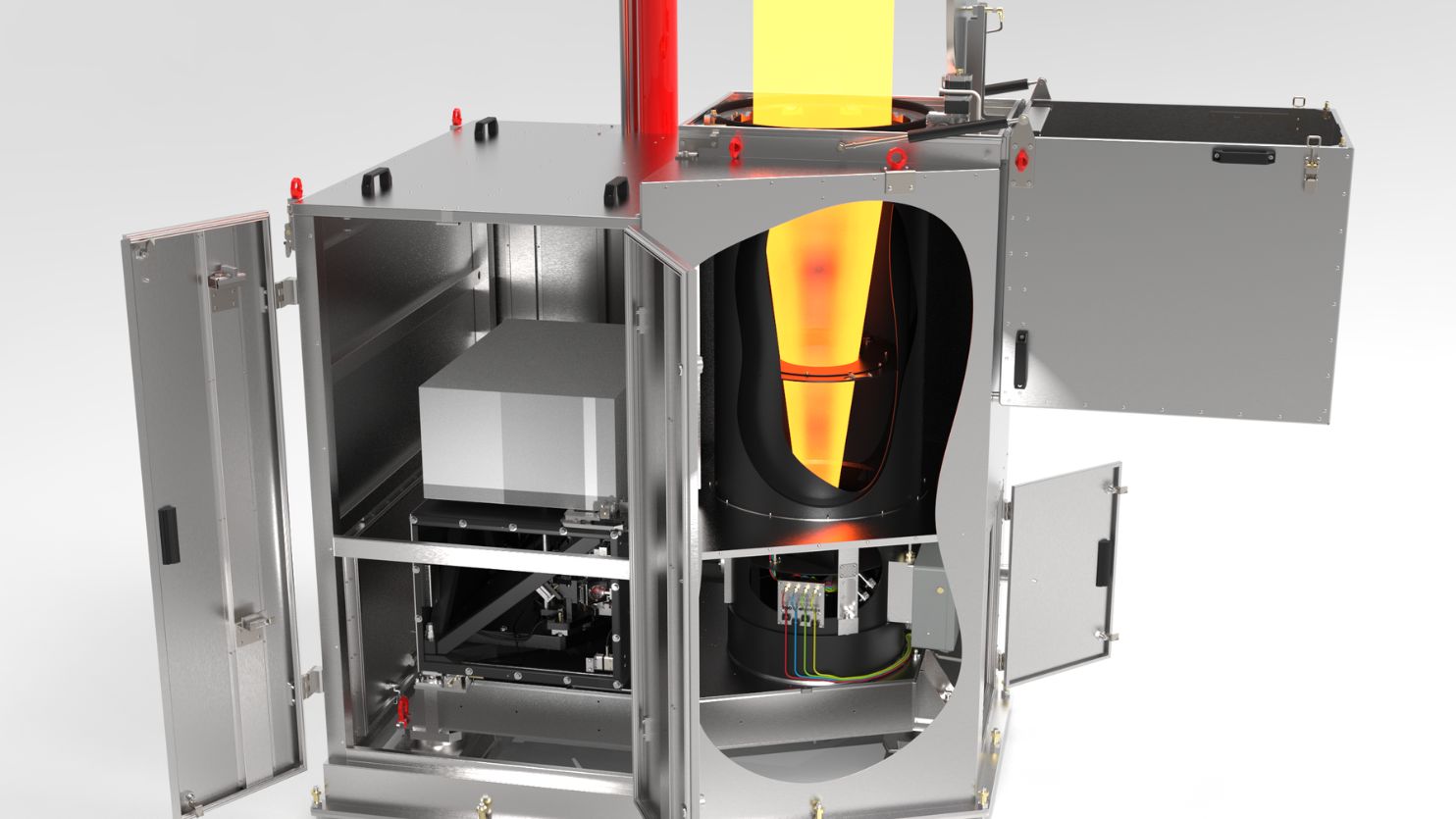
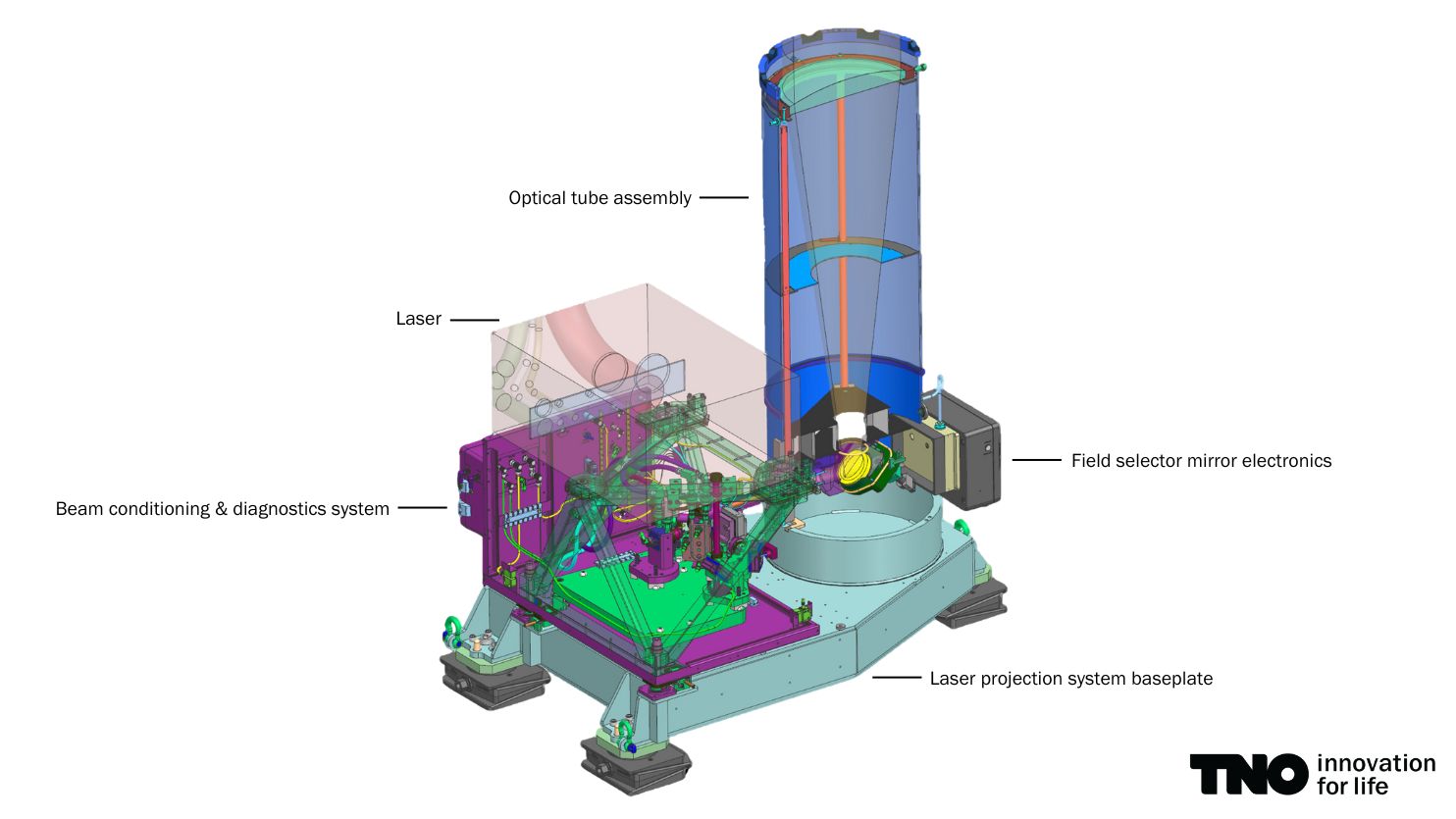
Series production
The current project status of the ELT-LPS is that the Final Design Review was passed successfully. Despite challenging requirements, the design is fully compliant. The first ELT-LPS unit has been fully built and passed initial (low-power) testing at ESO. After the initial unit is fully tested, a series production of units 2-9 will be initiated. ESO may order units 10-11 at a later time.
Use of this pre-existing design, with minimal modifications, can imply significant cost savings versus a new development. TNO's Laser Launch Telescope design is also being considered for GMT, Subaru and Keck telescope systems. The TNO-Demcon team has also looked into adaptations, such as making the system to be lighter weight, and enabling it to use a single split laser source beam to run multiple LPS systems. Please contact us to discuss adapting the Laser Launch Telescope to your requirements.
Get inspired
Space systems engineering
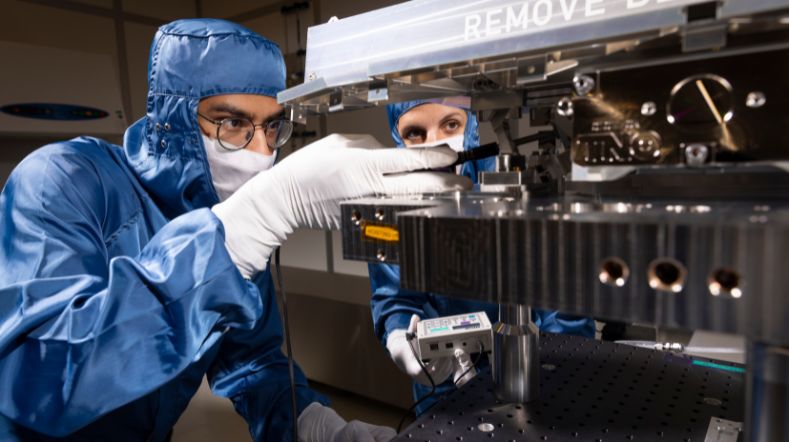

Deformable mirrors
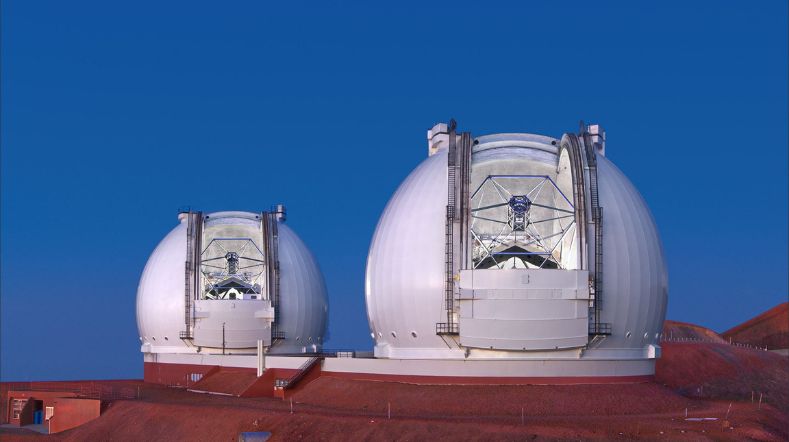

Space meets Quantum workshop
New step towards ecosystem for laser satellite communication in The Netherlands


ESA selects Dutch satellite system for local emission monitoring


